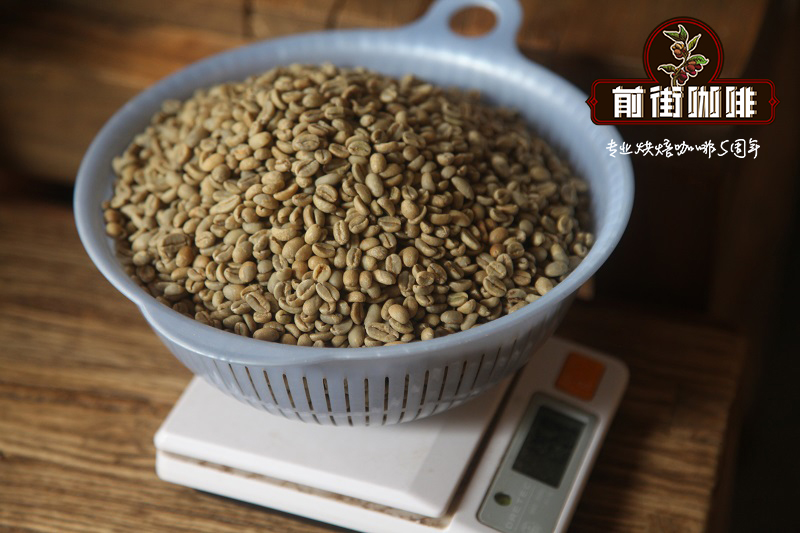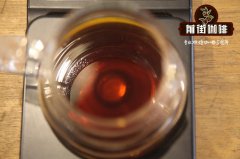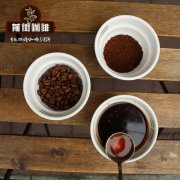How do different picking and handling methods of coffee beans affect their quality and taste? Pick coffee manually

Professional coffee knowledge exchange more coffee bean information please follow the coffee workshop (Wechat official account cafe_style)
How do different picking and handling methods of coffee beans affect their quality and taste? What are the benefits of picking coffee fruits by hand?
Under normal circumstances, 4-5-year-old coffee trees will blossom, flowering in about 2-3 months. Its flowers are white tubular petals with jasmine-like fragrance. Coffee flowers are similar to jasmine in appearance and smell, and are clustered on the branches of coffee trees when they bloom. White petals and light fragrance of jasmine are noble and elegant, but it is a pity that its flowering period is very short about 3Mel for 5 days. Therefore, it is a rare opportunity to enjoy the splendor of coffee flowers in the coffee garden.
The immature coffee fruit is green. After the ripening period of 6 Mel for 7 months, the mature fruit skin is red. Because its shape and color are similar to cherries, foreigners call the mature coffee fruit Cherry.
The structure of coffee cherries is like this: under the red skin (exocarp) there is a layer of pulp (mesocarp) with a small thin layer inside, and then a layer of parchment-like substance-endocarp. Inside all of these peels there are two beans with opposite planes, and the beans have a thin film or outer skin on the outside.
Most normal coffee trees produce coffee cherries that are smaller than the average, and there is only one bean among them. This kind of single-bean coffee has different names: single round coffee beans, beads or spiral coffee beans. It has no flat side but is small and almost completely round. Sorting out these beans and putting them together is bead coffee, which costs slightly more than ordinary coffee beans from the same tree. Many people claim that bead coffee will taste better, which may be caused by special sorting. The special sorting method can pick out any beans that are short, and the quantity is small, so the quality can be further guaranteed.
The ripening period of coffee beans from different varieties and different geographical regions is different. Most Arabica coffee beans have a ripening period of 8 months, while robusta beans have a ripening period of 11 months.
Regions north of the equator (e.g. Ethiopia and Central America) are generally harvested in September-November; south of the equator, such as Brazil and Zimbabwe (Zimbabwe), although the harvest lasts until August, the main harvest is in April or May; equatorial countries, such as Uganda and Colombia, harvest throughout the year, especially those plantations that make good use of different elevations. As a result, there may be new coffee beans for most of the year.
When the coffee fruit is ripe, it should be harvested immediately, but when there are fruits of different ripening stages on the same tree, harvesting is not an easy task, which is time-consuming and labor-consuming. Generally speaking, it takes as long as 5 months to fully harvest from the initial harvest, but if the ripe and immature fruits are picked at the same time, the quality of the coffee will be reduced, so most coffees insist on artificially picking the ripe fruit one by one. carefully pick it from the coffee tree to maintain the perfect taste of the coffee. Within a year, a typical Arabica coffee tree produces less than 5 kilograms of fruit and can be made into about 1 kilogram of coffee beans.
When most of a tree's coffee cherries are ripe, a picker may "peel" the whole tree, slide down the branches with his fingers, let the ripe and unripe coffee cherries fall to the ground, and rake them up with a rake. and the workers carry out the "bran".
The worker took a large-hole sieve and threw the raked coffee cherries into the air several times: twigs, leaves, coffee cherries and dust were raised high, and the workers were like magic tricks, catching falling coffee cherries when the wind blew something lighter to one side.
When the coffee fruit is harvested, the skin and flesh should be removed first, and then the coffee beans will be fermented and dried to make raw beans. The coffee fruit is rich in water, which explodes after a little squeeze, and the juice has a light and sweet taste. Tear open the pulp and the sheep's skin (also known as bean shell, seed shell, endocarp), which is protected by pectin layer, pops up. After the pulp is washed, it can be used to make pulp tea, or to make coffee berry wine, or to use it directly as fertilizer.
One of the main problems with manual peeling is that many coffee cherries are not in the best ripening stage, and these unripe or overripe coffee cherries must be extra selected, otherwise the coffee will be downgraded. Starting with manual sorting of coffee cherries, the highest quality Arabica is screened several times, and the initial manual sorting is often done by women and children.
The number of coffee beans picked depends on a variety of factors, the most obvious being the height of the trees and the layout of the trees or plantations. The average farm can pick an average of 50 kilograms per picker a day. But only 20% of these weights are real coffee beans, so the average picker can only pick 10 Mel 20 kilograms of coffee beans. The standard weight of a coffee beanbag is 45ml, a bag of 60kg. So it takes a worker six days to fill a bag.
It has been calculated that the cost of harvesting a plantation or farm is half of the total cost of the year. In Brazil, people have tried many times to use mechanical pickers to reduce these costs. The machine shakes branches across the coffee tree so that the berries that become loose because they are ripe will fall into the funnel. Mechanical pickers only work in areas with better natural conditions, and they need to be used in advance, because they can only be used where the trees can be planted in rows straight, and afterwards they need to check the coffee beans picked by the machine. pick out the leaves and branches that have fallen in the funnel.
Therefore, a large part of the coffee is picked by hand, which requires a lot of seasonal work, and pickers must be careful not to pick unripe, bad, or overripe coffee beans, because they will affect the overall quality of the harvest. Coffee beans that are not so good are classified as "ordinary", "sour" or "fermented", and the last one is very bad.
Washing type (wet method)
Remove the pulp from the outer layer of the coffee cherry and soak it in a large cement tank filled with water. After fermentation, the water-washed coffee will have a distinctive and clear flavor. The fermented coffee beans are washed with clean water, then removed from the water and dried in the sun or machine. Finally, the peel and silver peel are removed by a sheller, which can be screened and divided into different grades of raw coffee beans.
Drying (dry method)
The way to deal with it is to spread the coffee cherries widely on the exposure field for two weeks and sweep them with a rake several times a day so that the coffee beans can be dried more evenly. When dried, the coffee beans are separated from the skin, and the dried pulp and peel are removed by a sheller, then screened and divided into different grades.
Both washing and drying can produce the best quality coffee. Generally speaking, washed coffee has relatively distinct acidity and consistent flavor, while dry coffee has lower acidity and more varied flavor. Colombia, Kenya, Costa Rica, Guatemala, Mexico, and Hawaii all use water washing methods. Most of the coffee produced in countries including Brazil, Ethiopia and Indonesia is dried, but some water-washed coffees are also produced. The selection and grading of coffee depends on the particle size and concentration of beans, as well as the number of defective beans in a pound (broken beans under ripe beans, etc.). Like the best wine, the careful handling and selection of professional coffee in the production process can be seen in the quality of the beans, because the product will have a unique representation, which represents the origin, climate and growers.
Important Notice :
前街咖啡 FrontStreet Coffee has moved to new addredd:
FrontStreet Coffee Address: 315,Donghua East Road,GuangZhou
Tel:020 38364473
- Prev

Ethiopian Coffee | 2018 WBC Competition batch | Yega Xuefei G1 | recommendation of individual coffee beans
Professional coffee knowledge exchange more coffee bean information please follow the coffee workshop (Wechat official account cafe_style) front street coffee individual coffee bean recommendation-Yega Xuefei Sun Red Cherry Project | Strawberry tropical fruit floral Ethiopia Worka.Wuri G1 Berg Championship Series Washed Lot 2 2018 WBC World Cup batch Ethiopia
- Next

What is the effect of powder bowl size on extraction Italian concentration? What do single-and double-headed powder bowls have on cloth powder?
Professional coffee knowledge exchange more coffee bean information please follow the coffee workshop (Wechat official account cafe_style) powder bowl size on the extraction of Italian concentration? What's the difference between single-headed and double-headed powder bowls in cloth powder? The size of the powder bowl is another reason for changing the amount of powder, but it is not an adjustment to adjust the yield of espresso, it is purely for the sake of perfection.
Related
- Detailed explanation of Jadeite planting Land in Panamanian Jadeite Manor introduction to the grading system of Jadeite competitive bidding, Red bid, Green bid and Rose Summer
- Story of Coffee planting in Brenka region of Costa Rica Stonehenge Manor anaerobic heavy honey treatment of flavor mouth
- What's on the barrel of Blue Mountain Coffee beans?
- Can American coffee also pull flowers? How to use hot American style to pull out a good-looking pattern?
- Can you make a cold extract with coffee beans? What is the right proportion for cold-extracted coffee formula?
- Indonesian PWN Gold Mandrine Coffee Origin Features Flavor How to Chong? Mandolin coffee is American.
- A brief introduction to the flavor characteristics of Brazilian yellow bourbon coffee beans
- What is the effect of different water quality on the flavor of cold-extracted coffee? What kind of water is best for brewing coffee?
- Why do you think of Rose Summer whenever you mention Panamanian coffee?
- Introduction to the characteristics of authentic blue mountain coffee bean producing areas? What is the CIB Coffee Authority in Jamaica?

